Removing a toilet may seem hard. But it's not. You could be a tenant waiting on a repair or a homeowner redoing your bathroom. You just need a good guide to start with. The path to DIY toilet removal is clearer with a basic understanding of how to take a toilet out. This knowledge helps save both time and money.
If you're renting, you might need to know about housing laws too. But once you're ready with your gloves on, what you need are clear, practical instructions. This article offered by a well-known toilet brand HOROW gives you a step-by-step guide. It makes learning how to remove a toilet easy. And it helps you avoid problems throughout the process.
Common Reasons for Removing a Toilet
Homeowners and those responsible, for property maintenance may come across situations where they have to uninstall toilets for reasons like replacement or repairs or, as part of a do it yourself bathroom remodeling endeavor.
Replacement
The primary purpose of replacing a toilet is to install an one, for efficiency and convenience at home or work settings. Upgrading to toilets that are designed to conserve water not reduces utility costs but also contributes positively towards environmental conservation efforts. When dealing with recurring clogs or issues like cracks and continuous running of a toilet unit occur frequently; it indicates the need for a replacement to restore functionality. In cases where renovations involve changing the flooring area around the toilet space; adjustments to the base of the toilet may be necessary, for installation and alignment purposes.
Repair
Repairing a toilet is often necessary, for issues like leaks or damaged components that affect its functionality adversely.When addressing these problems replacing the seal or repairing the flange may require removing the toilet.
Bathroom Renovation
Taking out the toilet is also a step when renovating bathrooms as part of do it yourself bathroom improvement projects that may involve installing new tiles or fixtures and rearranging the layout of the space for reasons such, as laying down new flooring or reposition fixtures to enhance both the aesthetics and functionality of the bathroom.

In conclusion removing a toilet is crucial, for improvements, repairs or complete makeovers. Understanding the reasons and methods, behind it can make the process more seamless and fulfilling.
Remove a Toilet: Insightful Demolishing Guidelines
Removing a toilet may appear challenging at glance; however you can accomplish it neatly and securely by following the steps, for disassembling a toilet.You should start by turning off the water supply to prevent any leaks and make the removal process easier.
Turn off the Water Supply
Begin by finding the shut off valve, for the toilets water and closing it to avoid any flooding while taking apart the toilet unit.Remember to shut off the water supply to make sure there's no lingering water, in the pipes.
Empty Water in the Tank and the Bowl
To turn off the water supply to a toilet, follow these steps:
Locate the shut-off valve:
The valve that shuts off water is usually located on the wall or floor behind the toilet or sometimes at the left side of the toilet itself. It links to the pipe supplying water to the toilet tank.
Identify the valve type:
You might come across a handle, a lever, or even a ball valve.
Turn the valve:
If the valve has a handle, on it, turn the handle clockwise until it won't turn anymore to shut off the valve. If there's a lever instead? Make sure to position it at an angle to the water pipe for shutoff. For ball valves, check that the handle is turned to be perpendicular, to the pipe and not parallel anymore.
Verify the water is off:
When you raise the cover of the toilet tank,and notice that the water continues to flow in, after flushing is complete, it indicates that the valve may be partially open or malfunctioning.
Flush and drain:
Make sure that the water is turned off completely,in the toilet bowl area,by twisting the knobs firmly closed,with your hand or a wrench.Then, flush the toilet to drain the water from the tank and bowl. The bowl may still have some water left, after flushing.
Drain the remaining water (optional):
If necessary rinse off any water from the bowl using a sponge or a turkey baster.This action can be beneficial prior, to removing a toilet.
Disconnect the Tank and the Bowl
For toilets with two pieces, first separate the tank from the bowl. Inspect the connection, between the water tank and the toilet bowl. Fixing screws or bolts typically join them together securely at the top of the toilet bowl close, to the tanks base.
Please grab the tool like a wrench or screwdriver and loosen the screws or bolts. One person is needed to hold or support the tank to avoid any sudden tipping during removing.
Remove the Wax Ring and Flange
Remove the wax ring:
Please utilize a putty knife or a tool, with capabilities to remove the old wax rings located at the bottom of a toilet. Take care to handle it gently so as not to cause any harm to the glaze of the sewer pipe, below it followed by thorough cleaning up to ensure no traces of the wax ring material remain behind.
Remove the flange:
It is necessary to remove the screws fixing the flange, or remove them directly from the drain.For adhesive flange, it may require some strength, and patience.You can use an appropriate solvent, for softening, if necessary, but ensure that, the solvent is safe, and does not damage the pipe.
Disconnect the Toilet from the Floor
Once you've uninstalled the toilet fixture from its place, in the bathroom space carefully transport it to prevent any injuries or potential damages to the unit itself. Here are a few important points to keep in mind:
|
Tips |
Notes |
|
Safety equipment |
Wear thick working gloves,to protect your hands from scratches, and consider wearing non-slip shoes, against slip during handling. |
|
Check integrity |
Ensure that the toilet is intact and undamaged as toilets are prone, to breaking during handling. |
|
Smooth movement |
The toilet is heavy and fragile. Its advisable not to lift it but instead get help, from someone to hold the base and side of the toilet securely for you. |
|
Avoid violent vibration |
Move the toilet slowly to avoid violent turbulence,and avoid damage, to the internal ceramics. |
|
Use handling tools |
If possible, use a trolley or,handling belt to move the toilet more safely and, easily. |
|
Protect the floor |
In the process of handling the bottom of the toilet,you may scratch the floor, or wall, so the bottom can be padded, with soft cloth,or foam material,to avoid any damage. |
|
Door frame and narrow space |
Make sure you measure the toilet dimensions, to see if it can go through the doorway, and easily without any issues and think about either taking off the door or finding paths if necessary. |
|
Gently placing |
When placing the toilet,make sure the ground is stable and flat,to avoid the toilet turning over. |
|
Environmental considerations |
If you need to move the toilet to a location take into account the weather and refrain from doing so on rainy days or, during extreme temperatures. |
Clean the Drain Pipe and Surrounding Area
Once the toilet is removed successfully, it is crucial to maintain cleanliness,and prevent any potential blockages, of the sewer lines,and surrounding areas, in the future.
Clean up the drain pipe
Before proceeding make sure to inspect the sewer pipe for any remaining pieces of wax ring fragments of a flange or any other foreign materials present, in it.
|
Method |
Detail information |
|
High pressure water flushing |
If you can do it safely and effectively use a high pressure water hose to flush out any debris from, inside the pipe. |
|
Chemical dredging agent |
For stubborn dirt, pipeline dredging agent can be considered. You should operate according to the product instructions. Pay attention to safety and avoid chemical injury. |
|
Biological enzyme cleaner |
To achieve a cleaning without causing blockages, in the pipes one can rely on a biological enzyme cleaner that breaks down matter naturally. |
|
Physical method |
use special pipe brush or soft cloth, with cleaning agent for cleaning. |
Clean up the surrounding area
Remove the old sealing materials: Use a scraper, to carefully remove the old sealant,or cement around a toilet base,and keep the surface clean.
Make sure to clean the water outlet and floor,with bleach or a toilet disinfectant to get rid of bacteria,and unpleasant odors.
|
Sterilization |
Process |
|
Clean the floor |
Be sure to clean the floor, using a mixture of water and detergent, and pay attention to areas,like under the toilet,to ensure there are no lingering dirt,or soap remnants. |
|
Dry |
Don't forget to use a cloth,or mop to dry the spot,and prevent mold growth caused by dampness. |
|
Ventilation |
keep the drain pipe well ventilated, accelerate the drying process, and reduce the problems caused by moisture. |
|
Safety and precautions
|
Remember to follow the safety guidelines,before using, any cleaning products. |
|
Wear proper protective equipment, such as gloves. |
The mentioned steps are helpful, for unclogging the drainpipe,and cleaning the surrounding area, when removing a toilet to keep the space sanitary, during toilet installation or maintenance work.
Repair the Floor
Check the spot where the toilet was previously located for any damage once its been removed from the floor area.Look for any signs of damage, like holes or flooring issues; if you notice any problems, during this phase take steps to fix them such as filling in holes or replacing damaged sections of the floor.
Follow these steps to remove a toilet and prepare your bathroom for installing a fixture efficiently for any repairs you need to make in no time all.
Dispose of the Old Toilet
After you have removed your toilet from its spot, in the bathroom the next thing to do is to get rid of it responsibly according to the rules and regulations, in your area. You can consider recycling it taking it to a designated disposal center or even donating it as ways to handle the disposal of your toilet responsibly.
Check Local Regulations
One of the steps is to research the regulations, in your locality to ensure compliance with the guidelines corresponding to your locations requirements as these rules vary based upon geographical distinctions and areas of jurisdiction. Understanding these regulations aids in determining the approach, for disposing of your toilet.
Some cities in US offer services while others require payment, for disposal services. Chicago residents can dispose of a certain number of large items for free each year but must pay extra for any additional items, beyond that limit.
Curbside Pickup
You can choose curbside pickup if you think it is too difficult to dispose an old toilet by yourself. Certain locations allow individuals to leave items such, as toilets, for collection services after prior notification is given for arrangement convenience and avoiding the need to personally handle the load of a toilet.

Recycling Centers
It's beneficial for the environment to recycle your toilet preventing its components from being discarded as recent studies indicate a 15 percent increase, in recycling rates, which contributes to resource conservation and reduces waste accumulation, in landfills.
Habitat for Humanity ReStore
The Habitat for Humanity ReStore is a store that specializes in home improvement products and donations managed by Habitat for Humanity. An organization dedicated to enhancing housing affordability for all individuals. These stores offer individuals the chance to purchase used furniture items and appliances along with home decor and construction materials at prices compared to traditional retail outlets. By recycling and reselling donated items, to the community at rates Restores contribute to sustainability efforts by reducing waste and minimizing landfill use.
Donating your owned toilet can also help people who require housing aid in a meaningful way.If you donate to Habitat for Humanity ReStore, you promotes recycling and supports the building of homes.This allows you to assist others by getting rid of items while creating an influence, on the community.
Building Supply Stores
You might want to think about getting rid of your toilet at some building supply shops that take in salvaged or used construction materials.
Make sure to contact your building supply shops as they might have guidelines regarding the toilets condition or might need an appointment.This choice promotes recycling or reuse and supports eco-friendly disposal methods.
Certain hardware stores are willing to take your toilet when you buy an one and might even give you a discount, as a bonus – a win win for those wanting to dispose of their old toilets, in an eco-friendly way.
Landfill Disposal
You may need to dispose of it at a landfill site. Make sure to inquire whether your nearby waste disposal site accepts toilet disposals. Each year, in the United States sees an amount of waste disposed in landfills which includes toilets.
Professional Hauling Services
Getting a professional hauling service to remove your toilet can simplify things for individuals to handle the task themselves. These services adhere to regulations to ensure disposal of the toilet.
In summary, when its time to replace a toilet with an one, at your place and consider the best options available based on your capabilities and local regulations – whether it involves recycling to benefit the environment or contributing to housing initiatives through donations – there's something meaningful for everyone to choose from, in this process.

Pick Marvelous HOROW Toilets for Your New Experience
Revamping your bathroom with technology can introduce a sense of luxury and sophistication, to the rooms ambiance. Opt for HOROW toilets during a makeover to introduce enhancements that elevate both comfort and aesthetics making it a worthwhile investment, for creating your sanctuary.
Choose the Right Rough in Size
Embarking on a bathroom tech makeover involves choosing the match for your space. HOROW toilets offer a range of sizes to suit your plumbing needs perfectly! By ensuring the rough-in size is in place before installation begins makes fitting a new toilet hassle free and smooth sailing! This guarantees a setup without the need, for alterations. HOROW provides 10 inch rough-in size toilet, such as HOROW T0338W-10 one piece toilet, and HOROW T37 smart toilet, for compact bathroom. For 12 inch rough in, you can choose HOROW toilets, like HOROW T30, HOROW 76D, and HOROW 8733S-G.



Intelligent Toilet Features
Experience the convenience of automatic functions with HOROW smart toilets. It offers spray modes such as "feminine wash," "posterior wash," and "H/C massage." Features like instant heated seating, auto flush, dryer temperature options, and auto-deodorizing enhance your bathroom. Moreover, an intelligent night light adds safety during late visits. With the auto opening/closing lid, you don’t need to bend down after using the toilet. It is super convenient for the elderly who want a smart toilet to improve life quality.

Personalized Comfort and Hygiene
HOROW smart toilets cater to personal preference in many ways. Features like adjust nozzle position, different wash modes, control temperature and ADA compliant ensure a hygienic experience with extreme comfort. Embrace HOROW smart toilets and you customize your experience and enjoy every moment in the bathroom.

FAQ
1. What are the necessary steps to remove a toilet?
First, turn off the water supply. Then, empty the tank and bowl. If you have a two-piece toilet, disconnect the tank from the bowl next.
Remove the wax ring and flange. Unbolt the toilet from the floor. Finally, clean the drain pipe and area around it.
2. What should I consider before starting the toilet removal process?
Ensure you have necessary tools ready. Know how to turn off the water. Have towels or a bucket on hand for any water left.
Learn how to properly dispose of old toilet parts. If renting, check housing laws or agreements to avoid issues.
3. What common tools do I need for removing a toilet?
Ensure you have pliers, along with a wrench and a screwdriver on hand for the task, at hand. A utility knife may also be useful to have in case its needed.The situation may warrant having a hacksaw ready.
Don't forget to pick up a pair of gloves and grab something to assist in cleaning up the spilled water. Towels or a sponge should do the trick!
4. How do I dispose of an old toilet after removal?
Check out the regulations, in your area for getting rid of items. You could opt for collection or recycling. Consider donating them or hiring a service to haul them away.
5. How do I choose a new toilet to replace the one I've removed?
When planning your bathroom layout and design choices take into account the dimensions of the space and the plumbing requirements upfront.Don't forget to explore options that can enhance functionality in your bathroom space.Check out high tech toilets as an option to elevate your comfort levels.

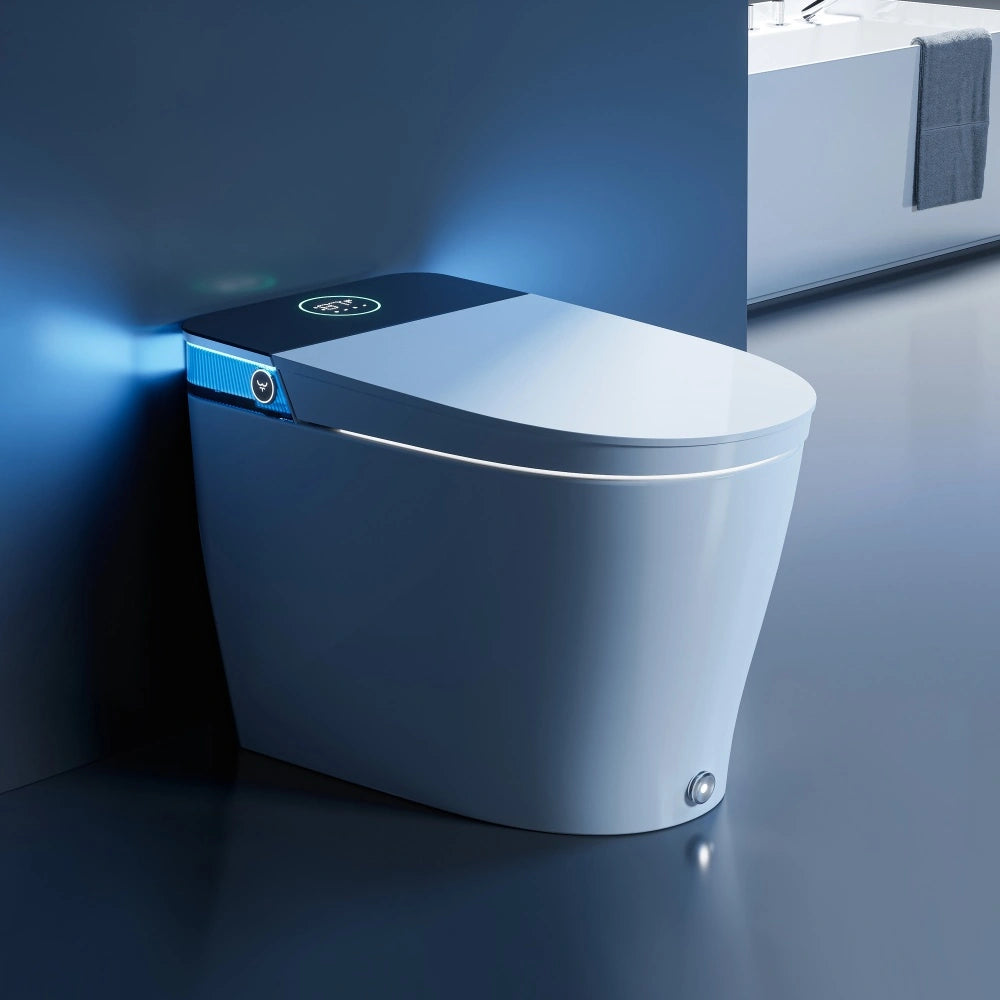
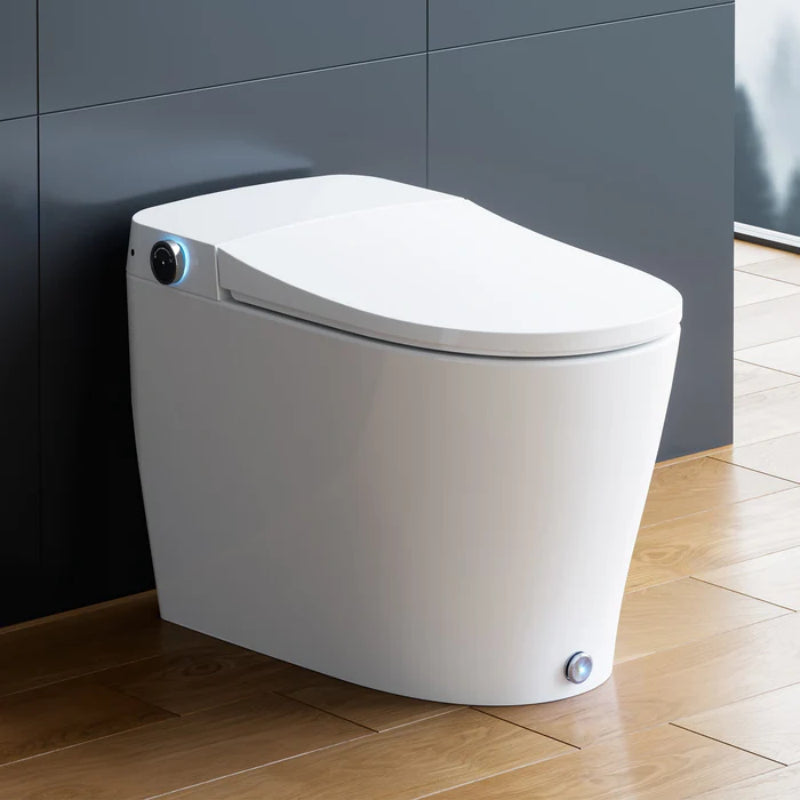
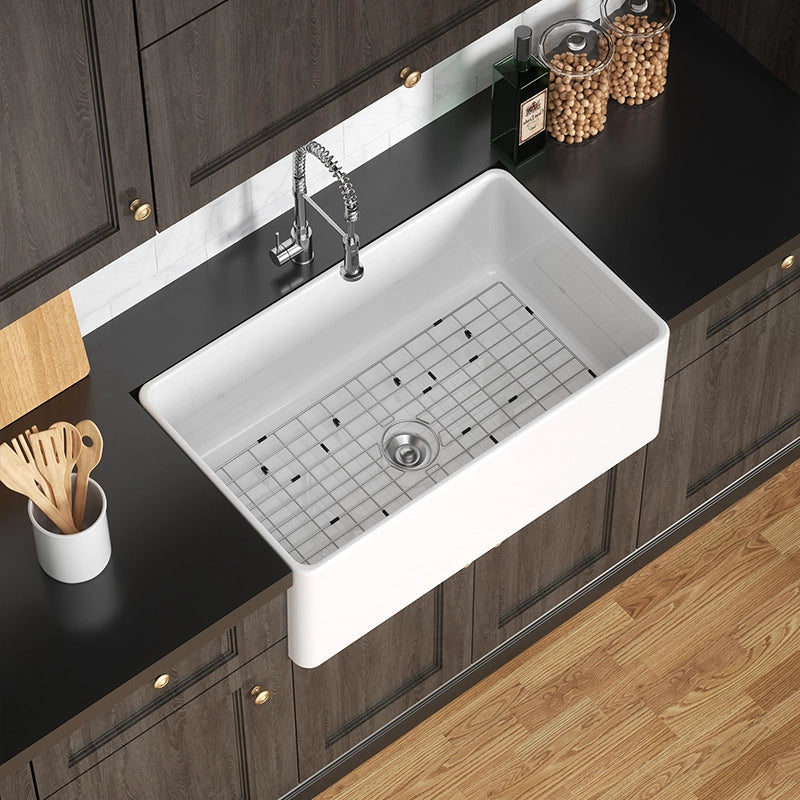
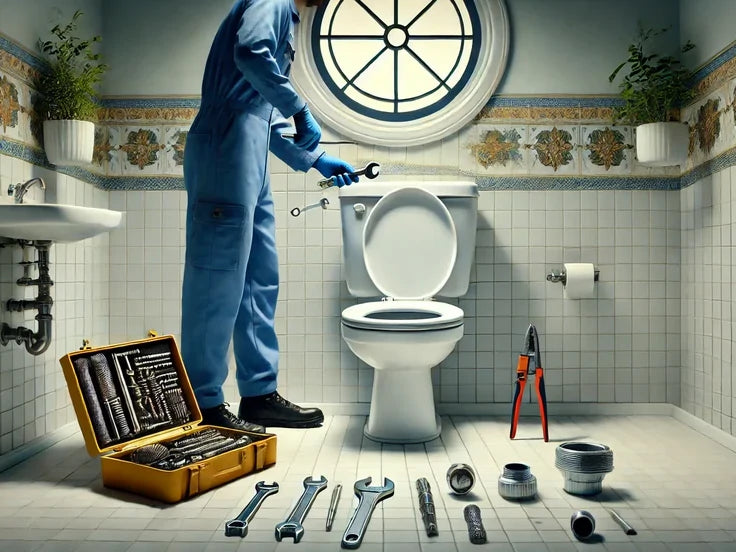
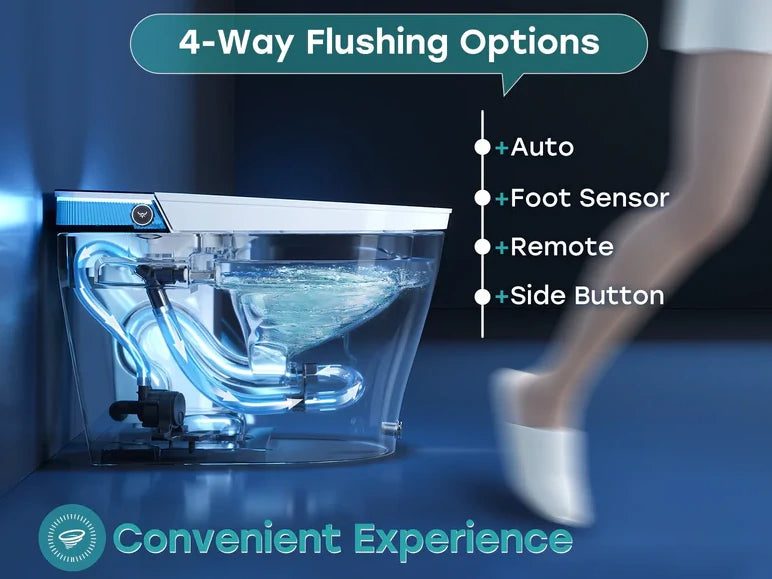
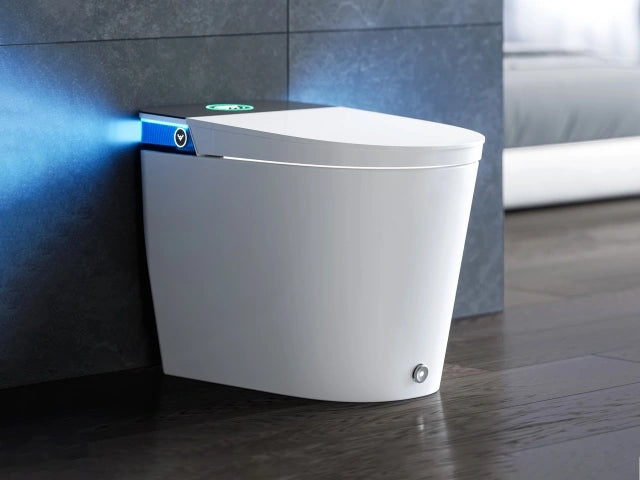

Leave a comment
This site is protected by hCaptcha and the hCaptcha Privacy Policy and Terms of Service apply.